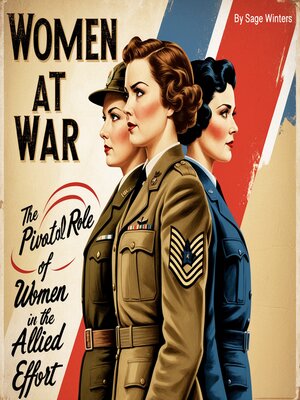Women at War
audiobook (Unabridged) ∣ The Pivotal Role of Women in the Allied Effort
By Sage Winters

Sign up to save your library
With an OverDrive account, you can save your favorite libraries for at-a-glance information about availability. Find out more about OverDrive accounts.
Find this title in Libby, the library reading app by OverDrive.



Search for a digital library with this title
Title found at these libraries:
| Library Name | Distance |
|---|---|
| Loading... |
Before the outbreak of World War II, women's roles in society were primarily defined by traditional expectations of domesticity and support. The early 20th century saw most women confined to the home, tasked with caring for children, managing households, and supporting their husbands. While some women worked outside the home, their opportunities were limited to roles deemed suitable for their gender, such as teaching, nursing, and clerical work. A societal emphasis on strict gender roles reinforced the idea that women's contributions were secondary to those of men.
Despite these restrictions, change was already stirring in many parts of the world. The suffrage movement had gained momentum in the late 19th and early 20th centuries, granting women the right to vote in some countries. This political shift signaled the beginning of a broader movement toward gender equality. Women's participation in the workforce during World War I also laid important groundwork, as millions stepped into roles vacated by men who had gone to fight. Although many women were forced to relinquish these jobs after the war, the experience proved their capability and fueled the belief that women could contribute beyond the domestic sphere.
However, the interwar period brought mixed progress. The economic hardships of the Great Depression in the 1930s reinforced traditional values in some regions, with governments and employers often prioritizing men for scarce jobs. At the same time, women's organizations continued to advocate for expanded rights, education, and opportunities. The period also saw significant cultural shifts, with women entering public life in new ways. The flapper era of the 1920s, for instance, challenged societal norms by embracing independence, freedom of expression, and modernity.







